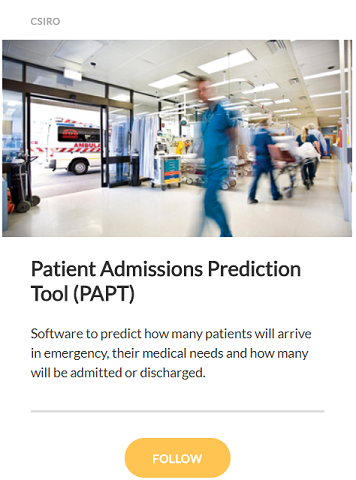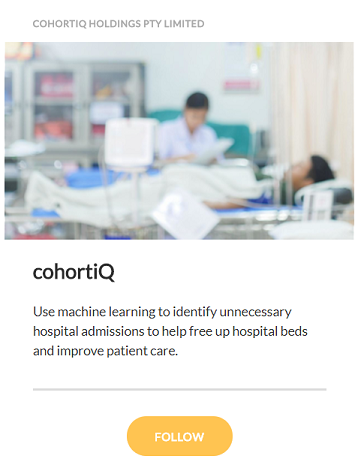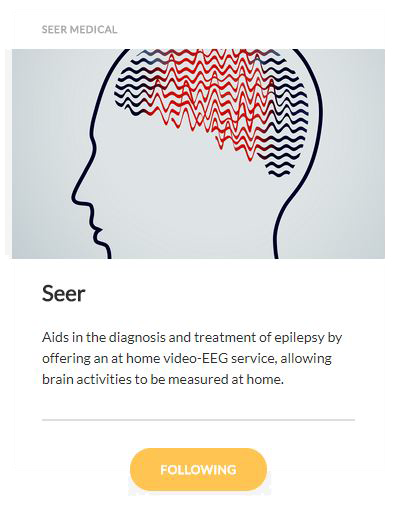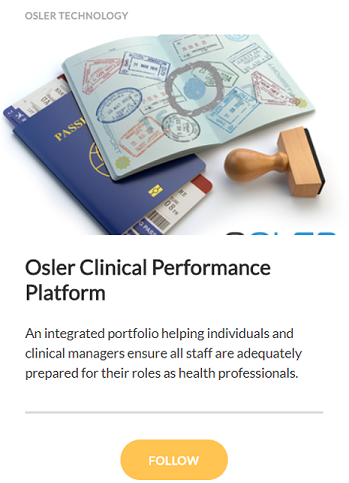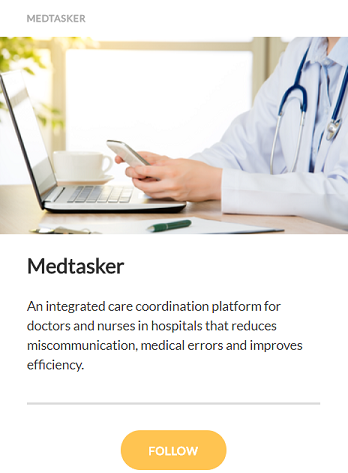Now while I can’t speak for everyone, the last time I was in a public hospital’s emergency department was not a pleasant experience. Despite the best efforts of staff it was clear that they were overstretched, with long wait times and fewer beds available than patients who needed them.
Reading the recently published AMA hospital report card and news articles looking at Tasmania’s public hospital crisis I realized that this is not a one-off experience, with hospitals struggling to meet targets as waiting times balloon and bed ratios remain static (and well below mandated targets) due to continued funding cuts. While it seems unlikely that being admitted to hospital could ever be a positive experience, it is clear that steps need to be taken to improve the current system. Thankfully Australian innovators are trying to fill these critical gaps by developing technology that can reduce hospital waiting times, streamline patient services and help nurses and doctors to achieve better patient outcomes. Other start-ups are taking different angles to solving the hospital crisis by improving training and communication for medical staff in efforts to streamline hospital processes and reduce day-to-day stressors for doctors, nurses and hospital administrators. Hospitals can use these tools to assist their hardworking staff to improve their services despite ongoing funding cuts.
Predicting patient admissions to improve hospital planning and management
Australian innovators have developed data analysis tools that can help to improve patient flow in hospitals and reduce unnecessary admissions. CSIRO’s Patient Admission Prediction Tool is being used to allow hospitals to predict daily admissions and streamline services to accommodate demand for services. The tool allows hospitals to reschedule elective surgery and plan staff vacation timings based on estimated admissions at a potential annual saving of 80 million USD a year in Queensland alone. More importantly, it provides hospitals with a tool they can use to help manage falling bed ratios due to funding cuts to improve patient outcomes. This will hopefully prevent the example I raised above as hospitals will be able to better predict demand and work behind-the-scenes to prepare beds in advance rather than playing catch-up on a daily basis.
Reducing the number of unnecessary patient admissions
CohortiQ has developed a machine learning tool to help hospitals identify cohorts of patients who can be treated within the community. This could save individual hospitals up to 1 million USD per year by preventing over 200,000 unnecessary admissions and lead to better patient outcomes through ensuring that beds are available to patients that need them, while providing patients in these cohorts with access to individualized treatment within the community.
Seer Medical is taking a different angle and working to develop an at home treatment and diagnosis option for people suffering from epilepsy. This could help epilepsy sufferers to better manage their condition through a wearable warning system that can predict seizures. The underlying technology is also being used to better understand the effects of experimental treatments including medicinal cannabis. Seer’s technology can be used in a home environment. This helps to free up bed space in hospitals and allows users to engage in work or leisure activities.
Improving training for junior doctors
Doctors are only human, and in a hospital environment they work in extremely stressful conditions, saving lives on a daily or indeed hourly basis. In fact recent reports have highlighted that two-thirds of young doctors are under serious stress and are at risk of burnout. The Osler Performance Plan is a simple web-based system that aims to improve training for junior doctors, in particular for complex surgeries, assisting in reducing unnecessary stress. Osler outlines the requirements to achieve different certifications and provides supervising doctors with simple checklists to complete during assessments. The tool also allows supervisors to provide feedback and hosts an online forum where doctors can share their experience with their colleagues. This will help to reduce daily stressors on our future doctors as they strive to improve patient outcomes both inside and outside of the hospital system.
Developing a one-stop-shop for hospital communications
A Melbourne start-up has developed Medtasker an all-encompassing communications tool that provides hospital staff with a secure communication platform that helps them better manage task triaging. It allows staff to clearly assign or reassign tasks on a priority basis meaning that doctors can best judge which patients need attention and ensure that all tasks are completed within the necessary times. It also assists hospital staff to comply with Australian legal requirements when sharing images or confidential patient information.
In combination these innovations and many others can provide valuable tools to hospital staff to reduce patient waiting times and improve the services that they offer. While alone these will not provide a solution to continuing funding cuts they can help public hospitals to better streamline services and improve patient outcomes, goals that we can all get behind.


